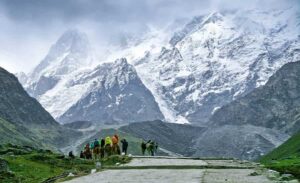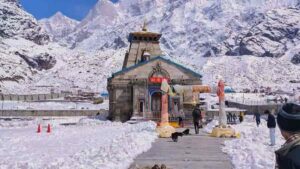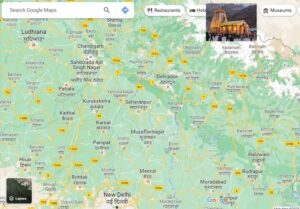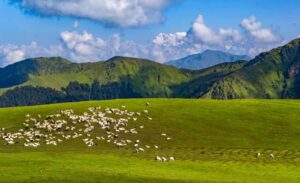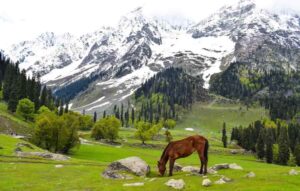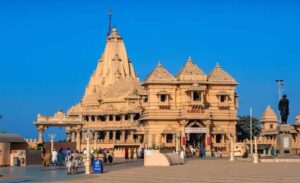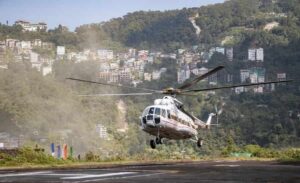Best Time to Visit Kedarnath
The sacred town of Kedarnath, nestled in the Garhwal Himalayas of Uttarakhand, India, attracts pilgrims and tourists alike with its spiritual significance and breathtaking natural beauty. Situated at an elevation of about 3,583 meters (11,755 feet) above sea level, Kedarnath is one of the Char Dham pilgrimage sites and holds immense religious importance for Hindus. When planning a visit to Kedarnath, it is crucial to consider the weather, temperature, and seasons to ensure a comfortable and enjoyable journey.
The best time to visit Kedarnath depends on your preferences and the activities you want to engage in. Generally, the temple is open to visitors from May to October. In this comprehensive guide, we will explore the best time to visit Kedarnath, taking into account the climatic conditions throughout the year.
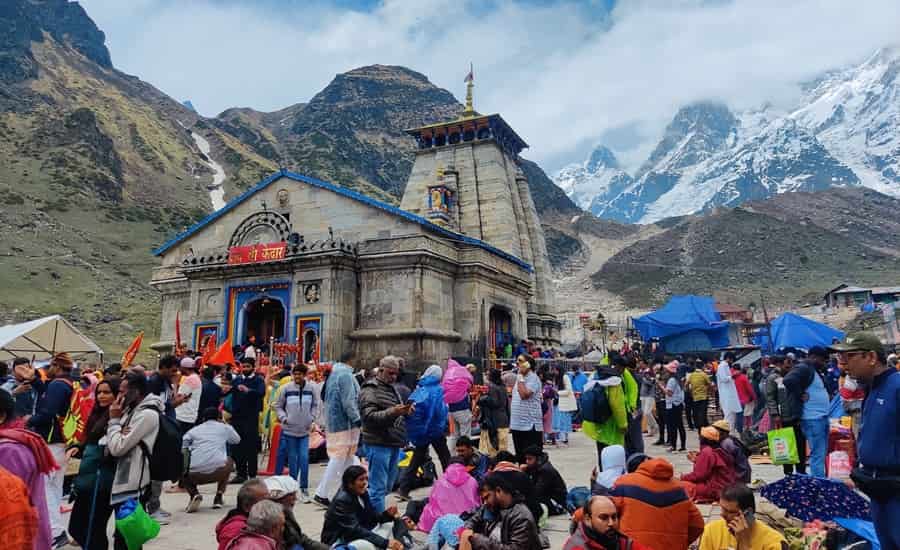
May to June (Late Spring to Early Summer)
- This period is considered ideal for pilgrimage and sightseeing.
- The weather is pleasant, with temperatures ranging from 5°C to 20°C.
- The snow begins to melt, revealing breathtaking landscapes.
July to August (Monsoon)
- Kedarnath experiences heavy rainfall during the monsoon.
- Landslides and flooding may occur, making the region challenging to navigate.
- Pilgrimage during this time is not recommended due to safety concerns.
September to October (Post-Monsoon to Autumn)
- This is another favorable time to visit after the monsoon subsides.
- The weather is cool and pleasant, with temperatures ranging from 3°C to 15°C.
- The landscapes are still lush from the monsoon rains.
Spring (April to June)
Weather
Spring marks the beginning of the pilgrimage season in Kedarnath. During this period, the weather is relatively mild, with daytime temperatures ranging from 5°C to 15°C (41°F to 59°F). The snow starts melting, and the region begins to bloom with colorful flowers, creating a picturesque landscape.
Temperature
In April, Kedarnath experiences cold temperatures, especially during the night, with temperatures dropping to around 0°C (32°F). As the season progresses into May and June, the days become warmer, with daytime temperatures reaching around 15°C (59°F). However, it is advisable to carry warm clothing, as the nights can still be chilly.
Seasonal Highlights
- The opening of the Kedarnath Temple usually takes place in late April or early May, depending on weather conditions.
- The scenic beauty of blooming flowers and the snow-capped Himalayan peaks adds to the overall experience.
Tips for Travelers
- Dress in layers to adjust to temperature variations.
- Carry sunscreen and sunglasses to protect against the strong sunlight at higher altitudes.
- Begin the trek early in the day to avoid afternoon rain showers.
Summer (July to September)
Weather
Summer in Kedarnath is characterized by monsoon rains. The weather becomes unpredictable, with the possibility of heavy rainfall and landslides. Daytime temperatures range from 10°C to 20°C (50°F to 68°F), while nights can be chilly.
Temperature
July tends to be relatively warmer compared to the previous months, with temperatures hovering around 15°C (59°F). However, the rain can make the trekking trails slippery and challenging.
Seasonal Highlights
- Despite the challenges posed by the monsoon, the lush greenery and the vibrant landscape can be captivating.
- The Kedarnath region receives rainfall, and caution is required while trekking or traveling.
Tips for Travelers
- Check weather forecasts regularly and be prepared for rain.
- Carry waterproof gear, including rain jackets and backpack covers.
- Be cautious of the possibility of landslides and stay informed about trail conditions.
Autumn (October to November)
Weather
Autumn is considered one of the best times to visit Kedarnath. The monsoon retreats, leaving behind clear skies and pleasant weather. Daytime temperatures range from 5°C to 15°C (41°F to 59°F), and the nights become colder.
Temperature
October sees a gradual decrease in temperatures, with daytime temperatures around 10°C (50°F) and nighttime temperatures dropping to around 0°C (32°F) or below.
Seasonal Highlights
- The post-monsoon clarity offers stunning views of the surrounding mountains and landscapes.
- The Kedarnath Temple remains open until the onset of winter, providing ample time for pilgrimage.
Tips for Travelers
- Pack warm clothing, including heavy jackets, as temperatures can drop significantly.
- Enjoy the clear views of the snow-capped peaks during this season.
- Plan your visit in early October to experience the best of autumn in Kedarnath.
Winter (December to March)
Weather
Winter is the coldest and harshest season in Kedarnath. The region receives heavy snowfall, and temperatures can drop well below freezing. Daytime temperatures range from -5°C to 5°C (23°F to 41°F), while nights are extremely cold.
Temperature
December and January are the coldest months, with daytime temperatures often staying below freezing. Nighttime temperatures can plummet to -10°C (14°F) or lower.
Seasonal Highlights
- The Kedarnath Temple remains closed during the winter months due to heavy snowfall.
- The entire region is covered in a pristine blanket of snow, creating a serene and tranquil atmosphere.
Tips for Travelers
- Visiting Kedarnath during winter is not recommended for casual travelers, as extreme cold and heavy snow make trekking and accommodation challenging.
- Winter visits are typically limited to experienced trekkers and those seeking a unique, snow-covered landscape.
General Tips for Visiting Kedarnath
- Altitude Sickness: Kedarnath is at a high altitude, and visitors may experience symptoms of altitude sickness. It is advisable to acclimatize properly, stay hydrated, and consult a doctor if needed.
- Packing Essentials: Regardless of the season, essentials include warm clothing, trekking shoes, a first aid kit, and any necessary medications. Carry a water bottle and snacks for the journey.
- Accommodation: Book accommodation in advance, especially during peak pilgrimage seasons. Options range from guesthouses to government-operated accommodations.
- Trekking Considerations: The trek to Kedarnath involves various challenges, including steep ascents and descents. It is essential to be physically prepared and hire local guides if needed.
- Respect Local Customs: Kedarnath is a sacred site, and visitors should adhere to local customs and rituals. Dress modestly and follow the guidelines set by the temple authorities.
In conclusion, the best time for Kedarnath spiritual tour depends on personal preferences and the type of experience one seeks. While spring and autumn offer pleasant weather and clear views, summer brings lush greenery despite the challenges of monsoon rains. Winter, although challenging, provides a unique and serene snowy landscape. Consider your priorities, check the weather forecasts, and plan your pilgrimage or trekking adventure accordingly for an unforgettable experience in the lap of the Himalayas.
Must Read:

